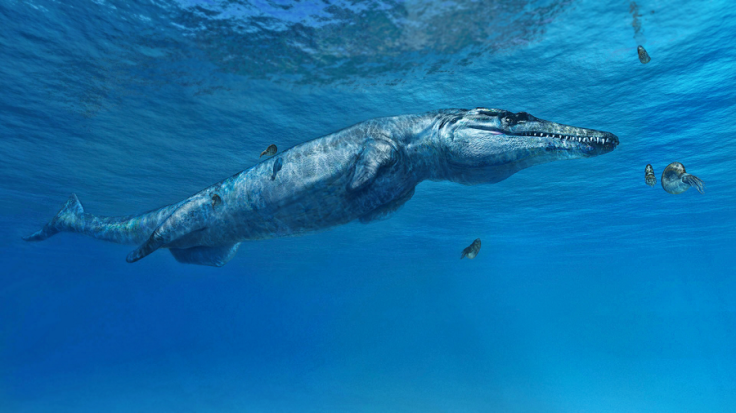Crocodile Evolution: Melksham Monster, Croc Ancestor, Older Than Scientists Thought

A newly discovered aquatic reptile species that was an ancestor to today’s crocodiles evolved about 163 million years ago, making these prehistoric creatures a lot older than scientists had thought.
Researchers announced their find in the Journal of Systematic Paleontology, describing the marine predator based on a seriously damaged fossil that was dug up in a different century and has been held at the Natural History Museum in London for almost 150 years.
“The new species was a 10-foot-long animal that lived in the warm, shallow seas that covered much of what is now Europe,” the University of Edinburgh said in a statement. “Powerful jaws and big, serrated teeth allowed it to feed on large prey, such as prehistoric squid.”
Those jaws and teeth, as well as other skull features, were what helped the scientists identify the prehistoric creature as a separate species.
It has been named Ieldraan melkshamensis, and received the nickname “Melksham Monster” for the place in England where its fossil was discovered, just east of Bath.
“The Melksham Monster would have been one of the top predators in the oceans of Jurassic Britain, at the same time that dinosaurs were thundering across the land,” researcher Steve Brusatte said in the university statement.
It belongs to a subfamily called Geosaurini. Although these crocodile-like reptiles were previously believed to have evolved and spread during the late part of the Jurassic period, when some of the most famous dinosaurs emerged and the supercontinent Pangea started its split into the separate landmasses we know today, the researchers studying this species say it is proof of an earlier evolution.
Other specimens were dated to between 152 million and 157 million years ago, but the new specimen is from 163 million years ago, pushing the timeline back in time by at least several million years. That would tag their evolution to the middle of the Jurassic.
The scientists used both the information about the newly discovered Melksham Monster and from a reanalysis of other fossils to come to their conclusions.
While studying the new species’ fossil, the researchers had to be careful because it was damaged.
“The specimen was completely enclosed in a super-hard rock nodule with veins of calcite running through, which had formed around it during the process of fossilisation,” fossil preparer Mark Graham said. “The work took many hours over a period of weeks, and great care had to be taken to avoid damaging the skull and teeth as they became exposed.”

By doing that careful investigation, according to the study, the team was able to work out that the Geosaurini group appeared on Earth earlier than previously believed, which tells scientists more about how the crocodile ancestry evolved.
“It’s not the prettiest fossil in the world, but the Melksham Monster tells us a very important story about the evolution of these ancient crocodiles and how they became the apex predators in their ecosystem,” researcher Davide Foffa said in the Edinburgh statement. “Without the amazing preparation work done by our collaborators at the Natural History Museum, it would not have been possible to work out the anatomy of this challenging specimen.”
© Copyright IBTimes 2024. All rights reserved.





















